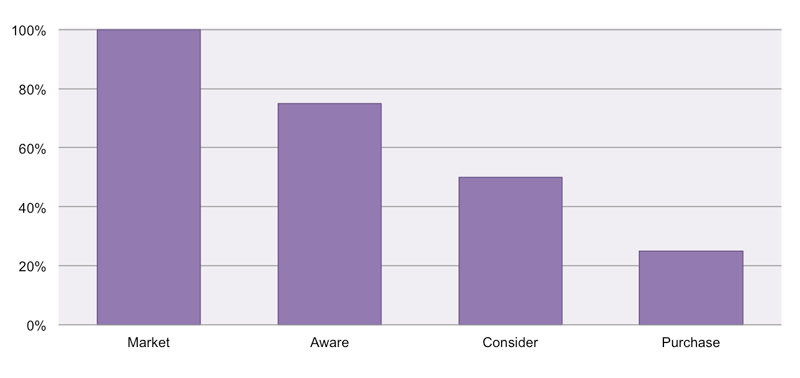Philosophy
Businesses don’t buy products. People do.

Whether your brand is B2B or B2C, you can’t persuade people to do business with you by merely presenting features and benefits. People do business with people they trust. You have to stand for something they believe in.
Why you need a storyteller in a digital world.
Today’s consumers are in a state of sensory overload:
- The Internet has almost two billion live sites, with the number growing by fractions of a second.
- Consumers are exposed to 500-1,500 brand messages a day.
- They remember only a handful.
So, how do you get anyone to notice you? How do you keep their attention? How do you even begin to persuade them?
Tell them a story.
But why resort to such an ancient technique in the digital world? Because throughout human history, the one thing that has engaged and persuaded human beings is storytelling. According to Adweek, storytelling is “the only way to change deeply entrenched views.”
The power of authenticity.
Being authentic means standing for something. Nothing illustrates the power of authenticity better than a story from the Golden Age of Advertising. In 1962, Hertz was the dominant car rental company. Avis was a distant second, with only 11% of the US market. Then it launched a campaign with a headline claiming, “Avis is only No. 2 in rent a cars.” The rest of the headline asked the obvious question: “So why go with us?” The opening line of the copy provided a credible answer: “We try harder.” In three sentences, Avis wiped out Hertz’s advantage and obliterated everybody else. People noticed them, believed them and rented their cars. Avis employees believed too and delivered. Four years later, Avis had 35% of the rental car market.
Since then, Avis has tried numerous other strategies, but whenever things get tough, it reincarnates “try harder.” You can’t beat authenticity.
Persuasion is art. Tactics are science.
Once you have your story, you need to be sure you’re using the right media and reaching the right people – in other words, using the right tactics. As the chart below shows, figure out where your greatest need is – for example, creating awareness – and you’ll know how to allocate your resources.
Choosing Your Tactics
Market: Your entire possible market – i.e., 100% of all prospects. Market research is the tactic for identifying them.
Aware: You will probably have fewer people aware than are in your total market. Your homepage and social media, plus any advertising or guerilla marketing tactics you choose to invest in are usually the most efficient ways to raise awareness.
Consider: Of those who are aware, only some will consider purchasing from you. Your website products page and product literature can increase consideration.
Purchase: Of those considering, only some will actually purchase. Here’s where you need point of sale materials or support materials for your sales force.
Therefore …
Stand for something. Be authentic. Remember Avis.

